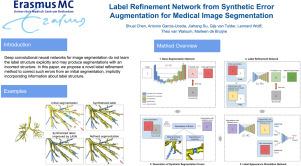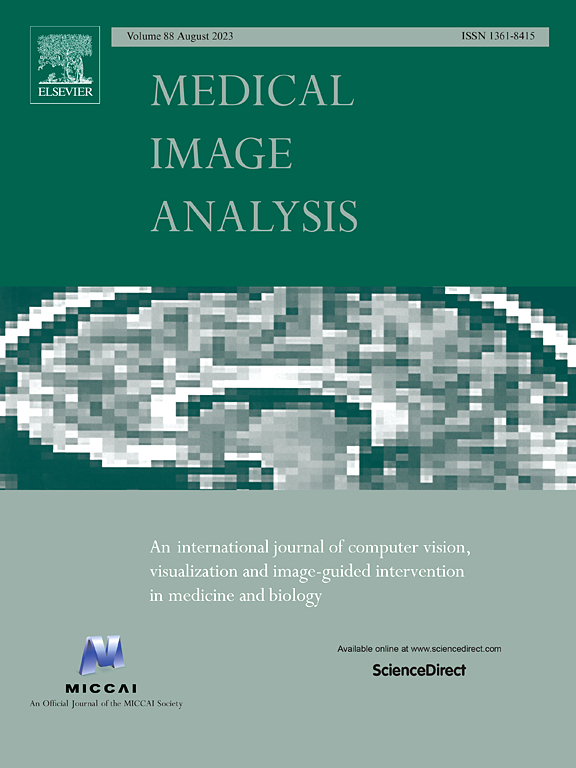Label refinement network from synthetic error augmentation for medical image segmentation
IF 10.7
1区 医学
Q1 COMPUTER SCIENCE, ARTIFICIAL INTELLIGENCE
引用次数: 0
Abstract
Deep convolutional neural networks for image segmentation do not learn the label structure explicitly and may produce segmentations with an incorrect structure, e.g., with disconnected cylindrical structures in the segmentation of tree-like structures such as airways or blood vessels. In this paper, we propose a novel label refinement method to correct such errors from an initial segmentation, implicitly incorporating information about label structure. This method features two novel parts: (1) a model that generates synthetic structural errors, and (2) a label appearance simulation network that produces segmentations with synthetic errors that are similar in appearance to the real initial segmentations. Using these segmentations with synthetic errors and the original images, the label refinement network is trained to correct errors and improve the initial segmentations. The proposed method is validated on two segmentation tasks: airway segmentation from chest computed tomography (CT) scans and brain vessel segmentation from 3D CT angiography (CTA) images of the brain. In both applications, our method significantly outperformed a standard 3D U-Net, four previous label refinement methods, and a U-Net trained with a loss tailored for tubular structures. Improvements are even larger when additional unlabeled data is used for model training. In an ablation study, we demonstrate the value of the different components of the proposed method.

用于医学图像分割的合成误差增强标签细化网络
用于图像分割的深度卷积神经网络无法显式学习标签结构,因此可能会产生结构不正确的分割结果,例如在分割气管或血管等树状结构时,会产生断开的圆柱形结构。在本文中,我们提出了一种新颖的标签细化方法,通过隐含标签结构信息,从初始分割中纠正此类错误。这种方法有两个新颖的部分:(1) 一个生成合成结构错误的模型;(2) 一个标签外观模拟网络,生成与真实初始分割外观相似的带有合成错误的分割。利用这些带有合成误差的分割和原始图像,对标签细化网络进行训练,以纠正错误并改进初始分割。提出的方法在两项分割任务中得到了验证:胸部计算机断层扫描(CT)中的气道分割和大脑三维 CT 血管造影(CTA)图像中的脑血管分割。在这两项应用中,我们的方法明显优于标准三维 U-Net、之前的四种标签细化方法以及针对管状结构进行损失训练的 U-Net。如果在模型训练中使用额外的未标记数据,则改进幅度会更大。在一项消融研究中,我们展示了所提方法不同组成部分的价值。
本文章由计算机程序翻译,如有差异,请以英文原文为准。
求助全文
约1分钟内获得全文
求助全文
来源期刊

Medical image analysis
工程技术-工程:生物医学
CiteScore
22.10
自引率
6.40%
发文量
309
审稿时长
6.6 months
期刊介绍:
Medical Image Analysis serves as a platform for sharing new research findings in the realm of medical and biological image analysis, with a focus on applications of computer vision, virtual reality, and robotics to biomedical imaging challenges. The journal prioritizes the publication of high-quality, original papers contributing to the fundamental science of processing, analyzing, and utilizing medical and biological images. It welcomes approaches utilizing biomedical image datasets across all spatial scales, from molecular/cellular imaging to tissue/organ imaging.
 求助内容:
求助内容: 应助结果提醒方式:
应助结果提醒方式:


